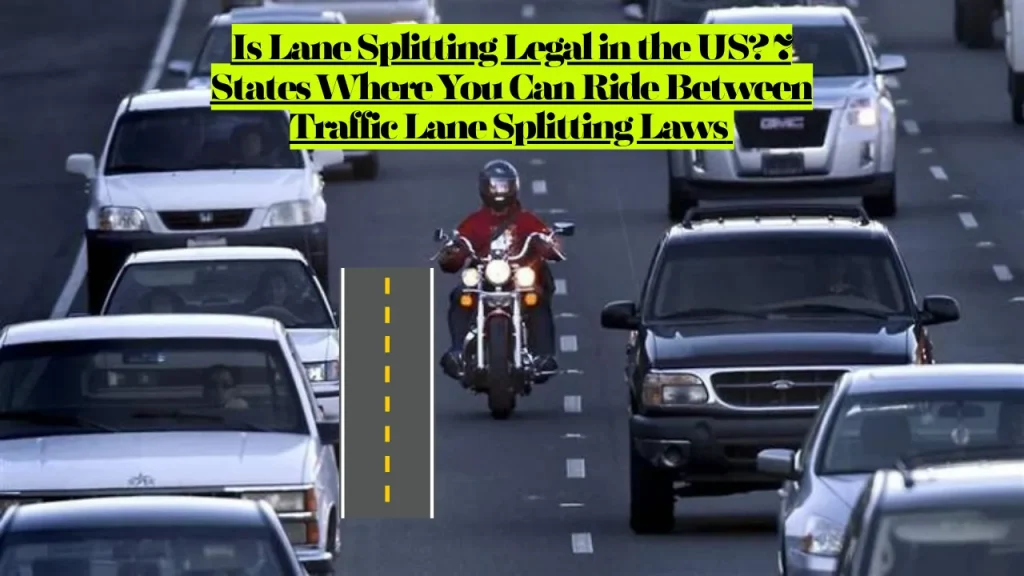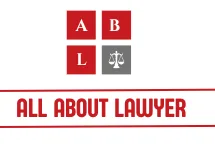Is Lane Splitting Legal in the US? 7 States Where You Can Ride Between Traffic Lane Splitting Laws
Lane splitting is fully legal in only one U.S. state (California), while six additional states permit limited lane filtering under specific conditions. As of October 2025, the states that allow some form of lane splitting or lane filtering are California, Utah, Arizona, Montana, Colorado, and Minnesota.
Understanding Lane Splitting: What Motorcycle Riders Need to Know
Lane splitting—the practice of riding a motorcycle between lanes of traffic moving in the same direction—remains one of the most debated topics in motorcycle law. For riders seeking to navigate congested highways more efficiently, understanding where this maneuver is legal can mean the difference between a safe commute and a costly traffic citation.
The legal landscape for lane splitting has evolved significantly in recent years. What was once prohibited in nearly every state has gained acceptance in select jurisdictions, with more states considering legislation to permit this practice under controlled conditions.
Where Is Lane Splitting Legal in the United States?
States That Allow Lane Splitting or Lane Filtering
California: Full Lane Splitting Legal
California became the first state to formally legalize lane splitting in 2016 through Assembly Bill 51 (AB-51), which officially defined and authorized the practice. California permits motorcyclists to split lanes at highway speeds, making it the most permissive state for this maneuver.
Key requirements in California:
- Motorcyclists must ride safely and prudently
- Lane splitting should not be performed at excessive speeds
- Riders should consider traffic flow and conditions
- California Highway Patrol recommends traveling no more than 10 mph faster than surrounding traffic
Minnesota: Lane Splitting and Filtering Legal (Newest State)
Minnesota legalized both lane splitting and lane filtering as of July 1, 2025, making it one of the newest states to permit these practices. The state joins California, Utah, Montana, Arizona, and Colorado in allowing these maneuvers.
Minnesota’s restrictions include:
- Speed limitations on when and where lane sharing can be performed
- Specific conditions must be met for legal lane splitting
- Motorcyclists must not exceed 15 mph over the speed of traffic
Utah: Lane Filtering Legal
Utah permits lane filtering rather than full lane splitting. Lane filtering became legal in Utah in 2022, allowing riders to pass between lanes of stopped traffic on roads with speed limits of 45 mph or below.
Utah’s lane filtering requirements:
- Only permitted when traffic is stopped
- Road speed limit must be 45 mph or less
- Motorcyclists cannot exceed 15 mph while filtering
- Filtering is prohibited on freeways
Arizona: Lane Filtering Permitted
Arizona allows limited lane filtering under specific conditions. Motorcyclists can ride between lanes of stopped or slow-moving traffic, but strict parameters apply.
Arizona lane filtering rules:
- Only legal on roads with posted speed limits of 45 mph or less
- Traffic must be moving at 15 mph or slower
- Motorcyclists cannot exceed speeds greater than 15 mph while filtering
Montana: Lane Filtering Allowed
Montana permits lane filtering with similar restrictions to other filtering states. Riders can move between lanes of stopped or slow-moving vehicles under controlled conditions.
Montana’s requirements:
- Traffic must be stopped or moving slowly
- Speed restrictions apply to filtering motorcyclists
- Only allowed in specific traffic conditions
Colorado: Lane Filtering Legal
Colorado has joined the states permitting lane filtering under restricted circumstances. The state allows motorcyclists to navigate between lanes when traffic is congested.
Colorado lane filtering parameters:
- Limited to specific traffic scenarios
- Speed and location restrictions apply
- Designed to improve traffic flow and rider safety
Related article: Lane Splitting vs Lane Filtering, Legal Differences Every Motorcycle Rider Must Know

Is Lane Splitting Legal in Alaska?
No, lane splitting is illegal in Alaska. Alaska’s traffic laws grant motorcycles the same full-lane rights as other vehicles and do not authorize riding between lanes. Alaska Administrative Code 02.427 makes lane splitting illegal by prohibiting motorcycles from passing or overtaking vehicles in the same lane or driving between lines or lanes of vehicles or traffic.
Alaska does allow lane sharing, where up to two motorcycles can ride side-by-side in the same lane, but splitting lanes between cars is prohibited.
Is Lane Splitting Legal in Hawaii?
No, traditional lane splitting is not legal in Hawaii. Hawaii maintains a ban on lane splitting in 2025 under HRS 291C-153(c), making the state stricter than California, Utah, Arizona, Montana, Colorado, and Minnesota. While Hawaii allows motorcycles to use the full lane and doesn’t explicitly ban lane filtering, it does not allow motorcycles to move between clearly marked lanes.
However, Hawaii does allow shoulder surfing, where motorcyclists can ride along the shoulder of the road to pass vehicles stopped on the road.
Lane Splitting Laws by State: Complete 50-State Breakdown
States Where Lane Splitting/Filtering Is Prohibited
States that prohibit lane splitting and/or lane filtering include Florida, Georgia, Illinois, Michigan, New York, Oklahoma, Oregon, Pennsylvania, and Tennessee, among many others.
The majority of U.S. states maintain laws that either explicitly prohibit lane splitting or have traffic statutes that effectively make the practice illegal. In these states, motorcyclists must occupy a full lane and cannot ride between lanes of traffic.
States with explicit prohibitions:
- Alabama
- Alaska
- Arkansas
- Connecticut
- Delaware
- Florida
- Georgia
- Hawaii
- Idaho
- Illinois
- Indiana
- Iowa
- Kansas
- Kentucky
- Louisiana
- Maine
- Maryland
- Massachusetts
- Michigan
- Mississippi
- Missouri
- Nebraska
- Nevada
- New Hampshire
- New Jersey
- New Mexico
- New York
- North Carolina
- North Dakota
- Ohio
- Oklahoma
- Oregon
- Pennsylvania
- Rhode Island
- South Carolina
- South Dakota
- Tennessee
- Texas
- Vermont
- Virginia
- Washington
- West Virginia
- Wisconsin
- Wyoming
Pending Legislation
Connecticut’s legislature is considering changes in 2025 with Senate Bill 1083, which could potentially legalize some form of lane filtering in the state. Several other states have introduced legislation to study or permit lane splitting, though most bills have not yet passed.
Six states have recently taken steps to adopt motorcycle lane splitting rules, indicating growing momentum for broader acceptance of the practice.
Understanding the Difference: Lane Splitting vs. Lane Filtering
Lane Splitting: The practice of riding a motorcycle between lanes of moving traffic traveling in the same direction. This typically occurs at highway speeds and is legal only in California.
Lane Filtering: A more restricted practice where motorcyclists ride between lanes of stopped or very slow-moving traffic, usually at intersections or in congested conditions. This is permitted in Utah, Arizona, Montana, Colorado, and Minnesota under specific conditions.
Lane Sharing: When two motorcycles ride side-by-side within the same lane. This is legal in most states but is distinct from lane splitting.
Legal Risks and Penalties for Lane Splitting
Penalties in States Where It’s Illegal
Motorcyclists caught lane splitting in states where the practice is prohibited face various penalties:
Traffic Citations:
- Fines typically range from $100 to $500 for first offenses
- Points added to driving record
- Potential increase in insurance premiums
Enhanced Penalties: Some states have passed laws with serious penalties for lane splitting violations, including losing motorcycle endorsements.
Accident Liability: If a lane-splitting motorcyclist is involved in an accident in a state where the practice is illegal, they may be found at fault regardless of other circumstances, which can affect:
- Insurance claims
- Personal injury settlements
- Criminal liability in serious accidents
Legal Defense Considerations
In states where lane splitting is illegal, riders typically cannot use traffic congestion or safety concerns as legal defenses. Courts generally hold that motorcyclists must follow the same lane usage rules as other vehicles.
Safety Considerations for Lane Splitting
When Lane Splitting Is Permitted
Even in states where lane splitting or filtering is legal, riders should prioritize safety:
Speed Management:
- Never exceed recommended speed differentials
- Adjust speed based on traffic flow and density
- Be prepared to stop suddenly
Visibility and Awareness:
- Use headlights at all times
- Wear high-visibility gear
- Watch for vehicles changing lanes
- Anticipate driver blind spots
Road Conditions:
- Avoid lane splitting in poor weather
- Be cautious on wet or slippery surfaces
- Consider road debris between lanes
Traffic Pattern Recognition:
- Identify vehicles likely to change lanes
- Watch turn signals and driver behavior
- Maintain escape routes
Research on Lane Splitting Safety
Studies from California and other jurisdictions suggest that when performed correctly under appropriate conditions, lane splitting may reduce certain types of motorcycle accidents, particularly rear-end collisions. However, the practice requires skill, experience, and constant vigilance from riders.
What Motorcycle Riders Should Know Before Lane Splitting
Before You Ride
- Verify State Laws: Always confirm current laws in your state and any states you plan to travel through
- Check Local Ordinances: Some municipalities may have additional restrictions
- Review Insurance Coverage: Understand how lane splitting might affect your coverage
- Assess Your Skill Level: Lane splitting requires advanced motorcycle handling skills
Best Practices for Legal Lane Splitting
In California:
- Follow California Highway Patrol guidelines
- Split lanes primarily in heavy traffic
- Position yourself where you’re most visible
- Avoid splitting near large vehicles
In Filtering States (Utah, Arizona, Montana, Colorado, Minnesota):
- Only filter when traffic is stopped or moving very slowly
- Respect speed limit restrictions
- Stay alert for pedestrians at intersections
- Never filter on highways or high-speed roads
Future of Lane Splitting Legislation
The trend toward legalizing lane filtering (if not full lane splitting) appears to be growing. Several factors are driving this momentum:
Traffic Congestion: As urban areas become more congested, lawmakers are exploring lane splitting as a traffic management tool.
Environmental Considerations: Allowing motorcycles to move through stopped traffic can reduce overall emissions from idling vehicles.
Safety Research: Emerging data suggests that properly regulated lane splitting may reduce certain types of motorcycle accidents.
Rider Advocacy: Organizations like the American Motorcyclist Association continue to promote lane splitting legislation in various states.
States currently considering or studying lane splitting legislation include:
- Connecticut
- Washington
- Virginia
- Texas
- Several others with pending bills
Frequently Asked Questions About Lane Splitting
Is lane splitting legal in all 50 states?
No, lane splitting is not legal in all 50 states. Only California permits full lane splitting, while Utah, Arizona, Montana, Colorado, and Minnesota allow limited lane filtering under specific conditions. The remaining 44 states prohibit the practice.
What’s the penalty for illegal lane splitting?
Penalties vary by state but typically include fines ranging from $100 to $500, points on your driving record, and potential insurance rate increases. Some states impose more severe penalties, including possible suspension of motorcycle endorsements.
Can I lane split in stopped traffic?
Only in states that specifically permit lane filtering (Utah, Arizona, Montana, Colorado, Minnesota) or lane splitting (California). Even in these states, specific conditions regarding speed limits and traffic flow must be met.
Is lane splitting safer than sitting in traffic?
Research suggests that lane splitting, when performed correctly under appropriate conditions, may reduce rear-end collision risks for motorcyclists. However, it requires skill and increases exposure to other hazards. Safety depends heavily on rider experience, traffic conditions, and speed differentials.
Will more states legalize lane splitting?
The trend suggests more states may legalize lane filtering in coming years. Several state legislatures are actively considering bills to permit the practice under restricted conditions.
What should drivers know about lane splitting?
In states where lane splitting or filtering is legal, drivers should:
- Check mirrors and blind spots before changing lanes
- Avoid blocking motorcyclists who are legally splitting or filtering
- Not attempt to prevent legal lane splitting
- Be aware that motorcycles may be passing between lanes
How fast can I go while lane splitting?
Speed limits vary by state:
- California: No specific speed limit, but recommended to travel no more than 10 mph faster than traffic
- Utah: Maximum 15 mph while filtering
- Arizona: Cannot exceed 15 mph while filtering
- Minnesota: Cannot exceed 15 mph over the speed of traffic
- Montana and Colorado: Speed restrictions apply based on specific conditions
Can I get a ticket for lane splitting even if I think it’s safer?
Yes. In states where lane splitting is illegal, safety concerns do not provide legal justification for the practice. Courts consistently uphold citations for lane splitting in states where it’s prohibited, regardless of the rider’s reasoning.
Resources for Motorcycle Riders
Official State Resources
California Highway Patrol:
- Lane splitting safety guidelines
- Educational materials for riders and drivers
State Department of Motor Vehicles:
- Current traffic laws and regulations
- Motorcycle handbook and safety courses
State Legislature Websites:
- Track pending legislation
- Review recently passed laws
Motorcycle Organizations
American Motorcyclist Association (AMA):
- Advocacy for rider rights
- Updates on lane splitting legislation
- Safety resources and training
State Motorcycle Rights Organizations:
- Local advocacy groups
- State-specific legal information
- Community support and education
Legal Resources
If you’re cited for lane splitting or involved in an accident while lane splitting:
- Consult with a traffic attorney specializing in motorcycle law
- Review your state’s specific statutes and case law
- Understand your rights and potential defenses
Conclusion: Navigating Lane Splitting Laws Safely and Legally
Lane splitting remains a complex and evolving area of motorcycle law in the United States. While only seven states currently permit some form of the practice, legislative momentum suggests this number may grow in coming years.
For motorcycle riders, the most important steps are:
- Know the law in every state where you ride
- Prioritize safety over convenience
- Stay informed about legislative changes
- Develop skills before attempting lane splitting in states where it’s legal
- Respect other drivers and traffic patterns
Whether you’re a daily commuter in California navigating rush hour traffic or a touring rider passing through multiple states, understanding lane splitting laws protects both your safety and your legal standing on the road.
Important Legal Disclaimer
This article is provided for informational and educational purposes only and does not constitute legal advice. Motorcycle traffic laws vary by jurisdiction and change frequently. The information presented here reflects publicly available information as of October 2025 but may not represent the current legal status in your area.
Before engaging in lane splitting or lane filtering, you should:
- Verify current laws in your specific state and municipality
- Consult with a qualified attorney for legal advice
- Check with your insurance provider about coverage implications
- Review official state Department of Motor Vehicles resources
Individual circumstances vary, and legal outcomes depend on many factors. Always prioritize safety and legal compliance when operating a motorcycle. If you receive a citation or are involved in an accident related to lane splitting, seek immediate legal counsel from an attorney specializing in motorcycle law in your jurisdiction.
Laws and regulations discussed in this article are subject to change. Always consult official government sources and legal professionals for the most current and applicable information.
Last Updated: October 2025
Sources: State Department of Motor Vehicles, State Legislature Records, American Motorcyclist Association, California Highway Patrol, and various state traffic law databases.
Note: This guide should be used as a starting point for understanding lane splitting laws. Riders are responsible for verifying current laws and regulations in their specific jurisdiction before operating their motorcycles.
About the Author

Sarah Klein, JD, is a licensed attorney and legal content strategist with over 12 years of experience across civil, criminal, family, and regulatory law. At All About Lawyer, she covers a wide range of legal topics — from high-profile lawsuits and courtroom stories to state traffic laws and everyday legal questions — all with a focus on accuracy, clarity, and public understanding.
Her writing blends real legal insight with plain-English explanations, helping readers stay informed and legally aware.
Read more about Sarah
